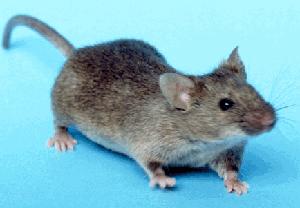Integrated Pest Management
House Mouse
Mus musculus
Mice Fact Sheet: English, Spanish.
Identification
- brown to gray colored fur with a lighter colored belly and large ears
- tail is naked and about the same length as the head and body combined
- 5 to 8 inches long, including tail
Nesting Habits
- prefer to nest in protected areas near a food supply and and heat
- indoors: dark corners, especially behind appliances that produce heat
Diet
- stored food products, human food, seeds
Significance
- contaminate food, damage property and spread disease
- scare people
IPM Recommendations
- Install tight-fitting door sweeps.
- Seal exterior cracks, crevices and areas around pipes and electrical conduits that enter buildings through walls.
- Reduce clutter indoors and outdoors.
- Minimize nesting habitat around property.
- Move dumpsters at least 50 feet from buildings.
- Keep all exterior doors closed.
- Store food in pest-proof containers.
- Monitor with non-toxic bait blocks in tamper-resistant bait boxes.
- Use snap-traps placed with triggers toward the baseboards, especially in dark corners.
- Use multiple baits: peanut butter, hotdogs, floss, etc.
- Train kitchen and custodial staff to clean thoroughly.




